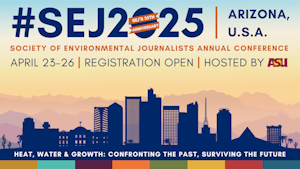"Thousands of years ago, the Arctic was ice-free. What can its past teach us about its future?"
"About 55 million years ago, something big happened to our planet: The atmosphere suddenly gained a bunch of carbon dioxide.
Scientists think that the event—called the Paleocene-Eocene thermal maximum, or PETM—was kicked off by volcanic eruptions, which released thousands of gigatons of CO2 into the atmosphere. Chaos ensued: The Earth’s climate shot up between 5 to 8 degrees Celsius; oceans experienced mass extinctions due to rapid acidification; and it took the planet nearly 200,000 years to recover.
All of this might sound eerily familiar in the twenty-first century. But there’s a key difference between the PETM and modern-day climate change. During the PETM, that massive influx of CO2 happened over a period of 20,000 years. Humans, meanwhile, have hit the accelerator on atmospheric CO2 in less than 250 years."
Molly Taft reports for Atmos with photographs by Lena C. Emery December 3, 2024.













 Advertisement
Advertisement 



